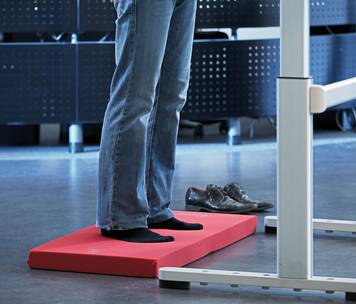Improving ergonomics – alternative office workplace design
Background
Although they do not carry out heavy physical work and their job is not seen as involving the "classic" risk factors for musculoskeletal diseases, office workers are in fact particularly frequently affected by musculoskeletal problems.
(cf. Erika Zoike, Krankheitsarten (Illness types), 1997. Essen: Bundesverband der Betriebskrankenkassen, BKK BV, 1999.) This means it is crucial to change working conditions to prevent musculoskeletal diseases. The commonest set of symptoms in the neck, shoulders and back are
(cf. Erika Zoike, Krankheitsarten (Illness types), 1997. Essen: Bundesverband der Betriebskrankenkassen, BKK BV, 1999.) This means it is crucial to change working conditions to prevent musculoskeletal diseases. The commonest set of symptoms in the neck, shoulders and back are
- Painfully restricted range of movement
- Painful muscles
- Painful entheses and an increase in discomfort when there is a change in your movement pattern
- Inadequate working materials and furniture
- Keyboard and monitor, the main working materials, are poorly positioned
- Too much time spent working at the monitor
- Too few changes of posture
- Standing on a hard surface uses a lot more energy than sitting, mainly as it involves the large muscle groups in your thighs and buttocks.
- This means it causes tiredness more quickly.
- Standing for a long time on a hard surface puts pressure on your hips.
- As the leg’s venous muscle pump is inactive, blood can collect in your leg veins
- This can cause vascular disorders such as varicose veins and thrombosis.
- Standing on a soft surface activates the fine, deep muscle layers required to keep your balance
- You feel less tired and stressed and can concentrate better
- Provides relief from back and neck pain
Walking to a better performance
Prof. M. Spitzer, Dr. S. Kubesch






